Sega Fish Life: A brief history
Specifically conceived to simulate an interactive aquatic environment, the Fish Life, inspired by the virtual aquarium system 魚八景 (Sakana Hakkei) which was developed in 1995[10,94] by NEC, a Japanese electronics manufacturer known mainly for the games console PC-Engine, is not very well known. Developed by Sega, its unique story goes all the way back to 1996. During that year, Sega’s R&D AM5 department focused on developing a program allowing fish to move around in a virtual underwater space. Founded in 1991, Sega R&D AM5 (Sega Amusement Machine Research and Development Department #5) mainly manages the firm’s most ambitious projects, particularly concerning hardware dedicated to Sega’s own theme parks, such as ジョイポリス (Joypolis) in Japan and China.
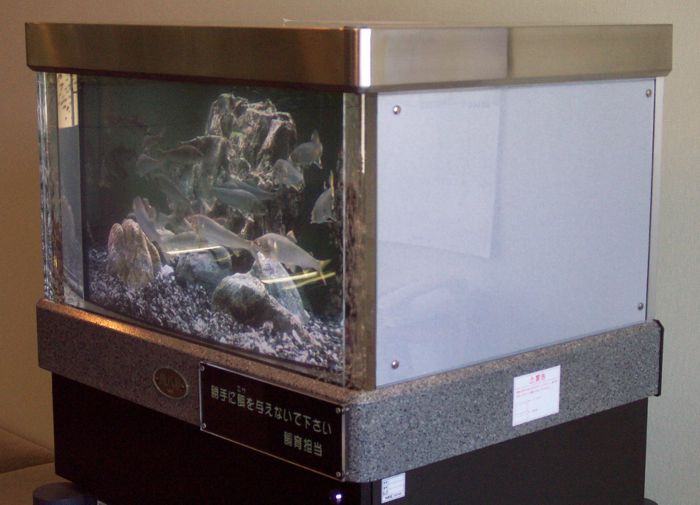
In 1996, this branch was given the responsibility of developing a virtual aquarium for the Joypolis park to be inaugurated in Kyōto in 1997[11]. Their aim was to create an interactive attraction with an underwater theme, which would be suitable for all audiences. The finished product, called アクアリーナ (Aquarena), gave visitors the opportunity to interact with fish in a virtual aquarium. Details about the game and its gameplay are almost impossible to find. We know that the software was already being used on a touch-screen system to provide interaction with underwater creatures, displayed on three giant 100-inch screens. Interaction was managed by a system of eight touch screens[75]. As Aquarena can still be found in some Joypolis parks, recent descriptions indicate that you can take a photo of yourself and stick it next to a fish before interacting with it[61]. It’s difficult to imagine that this would be possible with software from 1997. However, certain functionalities which still exist, such as drawing a fish to make it swim into the aquarium[77] or displaying information about the fish that come to life in front of your eyes, were already in place in the first version of Aquarena[75].
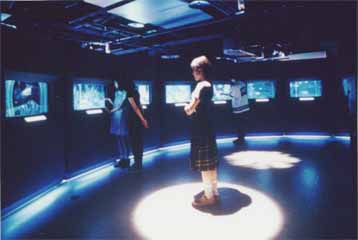
Later, this system was installed in a restaurant called フィッシュオンチップス (Fish On Chips) which opened on 17 July 1999 in Kawashima, in the Gifu Prefecture[11,87]. The system is, however, different to the attraction in the Kyōto Joypolis Park. The 15-inch touch screens are actually integrated into the tables, so that each customer can play with the virtual fish in the aquarium. Another machine, most likely not interactive, displayed scenes from underwater life on three 200-inch screens. According to Kenya Yamashita, Fish Life developer and member of Sega R&D AM5, the idea to commercialise the Fish Life came into being after a client had asked if it was possible to have such a system at home.
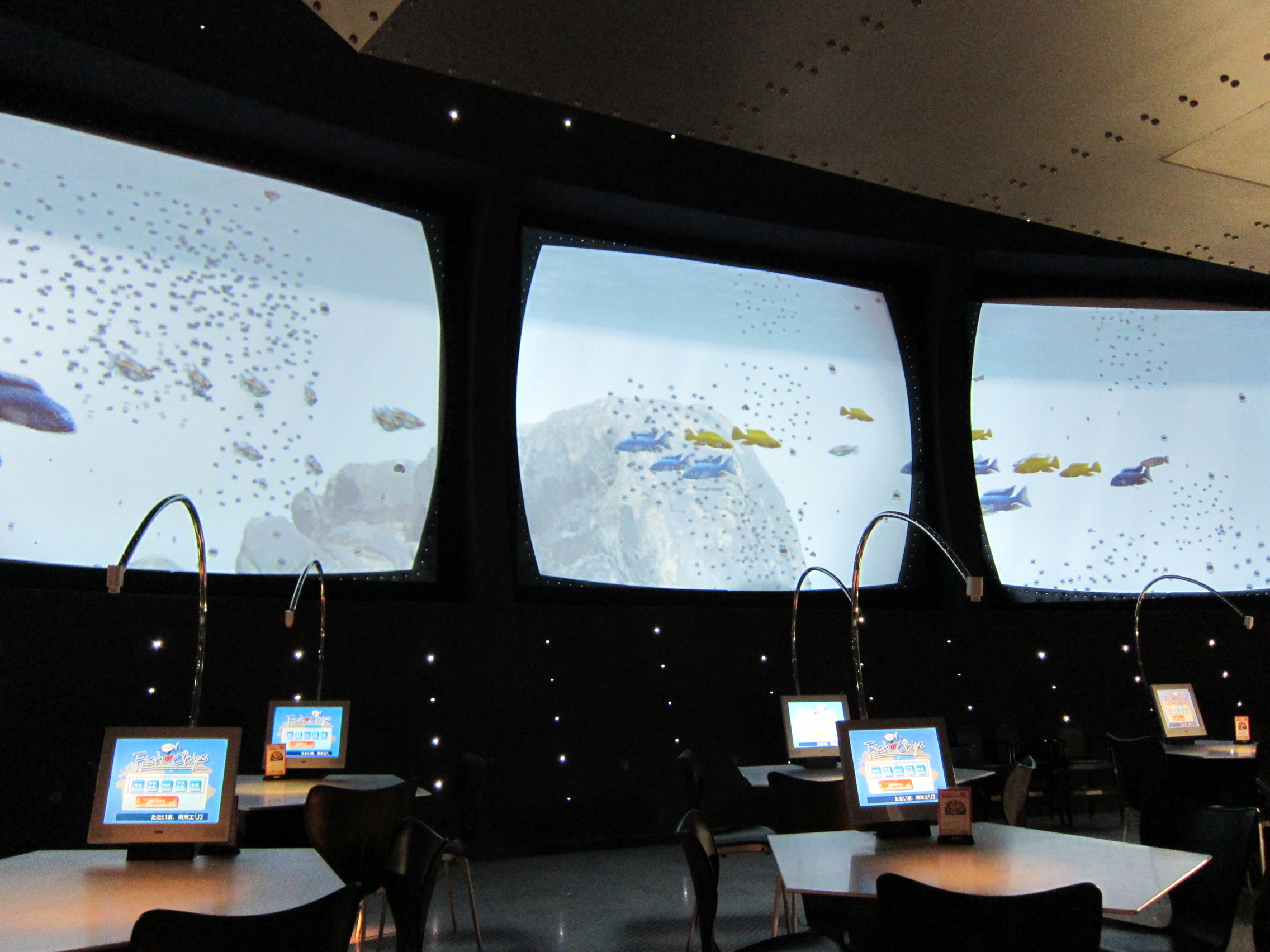
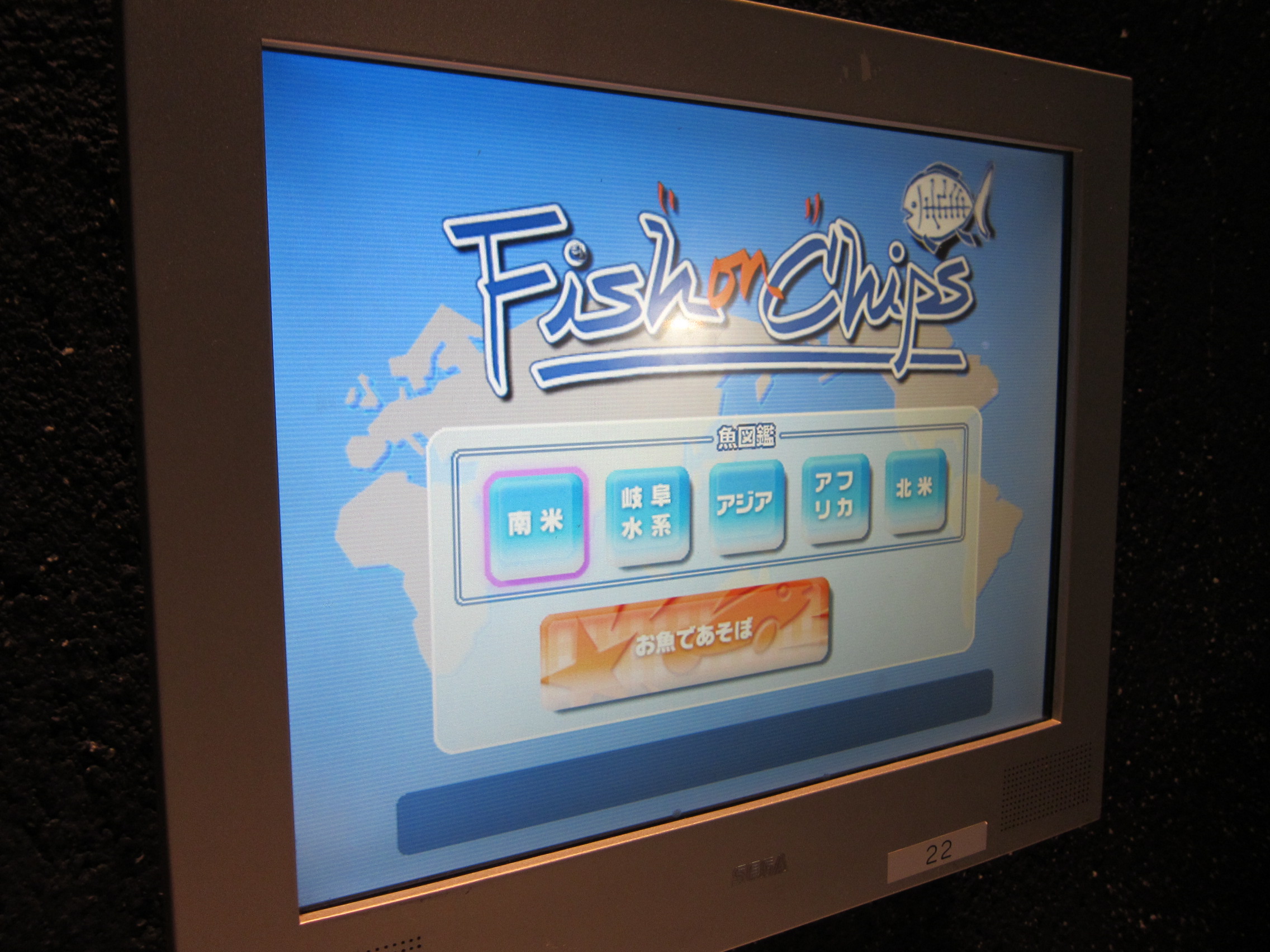
And so began the development of what we now know as the Sega Fish Life, consisting of an accessible version for private clients of the technology found in Joypolis and in the restaurant Fish On Chips. There were many challenges to overcome as Sega wanted to keep the touch screen interactivity of the existing programs whilst adding extra functionalities such as voice commands. To be able to do this, the Fish Life needed to have dedicated hardware – a touch screen and a disc drive. Therefore, the development team decided to use the Dreamcast as a basis for the hardware, a console which was released in Japan in November 1998. Kenya Yamashita explains that it is a Dreamcast with a bigger integrated fan, as well as software differences in the firmware in order to be able to launch the games from the Fish Life range[11]. Although the architecture is similar, the Fish Life material has been specially conceived to launch the dedicated games, thus preventing a standard Dreamcast from playing Fish Life software. The Fish Life is an all-in-one platform bringing together a console and a range of programs. To be able to fully enjoy all of the software’s functionalities, it is necessary to have the screen and base developed by the Sega R&D AM5 team.
Once the concept had been defined and developed, a long marketing campaign is launched[38]. Just two months after the modified Aquarena system is installed in the Fish On Chips restaurant, the Fish Life is presented at the 1999 Amusement Machine Show in Tokyo[1] from 10 to 12 September 1999. Interestingly, despite the software being less interactive and more contemplative, this particular convention focuses on the arcade world. Furthermore, you don’t have to pay to play and the publicity for the Fish Life was centred around the promotion of a deluxe Dreamcast with a target audience of hotel lobbies and restaurants[10]. Kenya Yamashita even goes as far to say that it is for interior decoration in a professional environment[11]. However, since the Sega R&D AM5 studio responsible for its development is specialised in products for arcades, there is an explanation for the presence of the Fish Life at such an event.
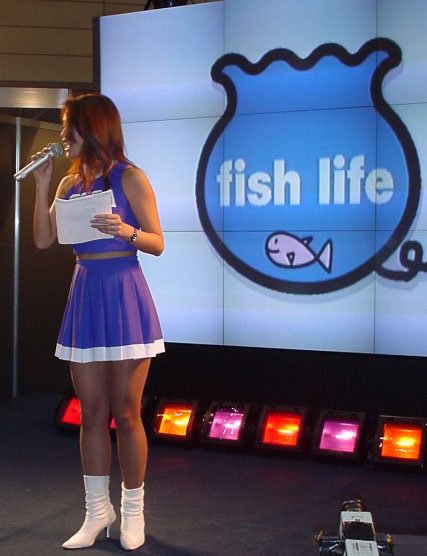
Before its public release, the Fish Life made itself known at a number of trade shows, including the Amusement Trades Exhibition International (ATEI) 2000 in London, the Amusement Machines’ Operators Union (AOU) 2000 in Tokyo, and the Tokyo Game Show in the spring of 2000[3,14,41]. Retrospectively, its most important appearance takes place at an event organised on 11 November 1999 by the Isao Okawa Foundation, named after Sega’s president at the time[42,43,44]. In fact, despite presenting various accessories for the Dreamcast (Zip reader, Ethernet network card and a webcam) and the Fish Life[17], Okawa announces the end of all hardware development for personal games consoles, after two years of working on the Dreamcast. The announcement that Sega would no longer be producing consoles was curiously accompanied by the presentation of new hardware.
History tends to remember the sad news revealed at this event and, despite appearances at the biggest arcade and video games conventions, the Fish Life is barely mentioned in foreign press which settles for only dedicating a short column to it or a brief mention at the end of an article.
In Japan, the system’s promotion is much more high-profile as specialised publications are filled with enthusiasm over its release. It arrives on the Japanese market on 20 June 2000[4,10,25]. It is important to note that the system was never released internationally. The English-language publication Dreamcast Magazine blames the lack of investment from importers to get the system out of Japan[78]. One year after its release, the system appears in the film 釣りバカ日誌12 史上最大の有給休暇 (Tsuribaka Nisshi 12: Shijō Saidai no Yukyū Kyūka)[50,96], in what seems to be a product placement by Sega, boasting about its computer graphics capabilities. 🐟
Some chronological milestones
- 1995: Sakana Hakkei released by NEC, a virtual aquarium with a screen displaying LaserDisc videos placed behind a water compartment[10,94].
- 1996: First developments of virtual fish for the Aquarena attraction[11].
- 1997: Aquarena, Kyōto Joypolis. Development by Sega R&D AM5 studio[11].
- 17 July 1999: Launched in the Fish On Chips restaurant in Gifu with 15-inch Sega monitors on each table and giant screens[1,11,67].
- 10–12 September 1999: Presence of Fish Life at the 1999 Amusement Machine Show in Tokyo[1].
- 11 November 1999: Isao Okawa Foundation event. The President of Sega, Isao Okawa, announces that Sega will be stopping the production of the Dreamcast and all video game hardware. Amusingly, the Fish Life is presented at this event[42,43,44].
- January 2000: Presence of Fish Life at the Amusement Trades Exhibition International 2000 in London[14].
- 29 February 2000: Presence of Fish Life at the Amusement Machine Operators’ Union 2000 in Tokyo[2,3,20,21].
- 31 March – 2 April 2000: Presence of Fish Life at the Tokyo Game Show in the spring of 2000[41,49].
- 20 June 2000: Fish Life hardware released for the price of 498,000 JPY, approximately 4,240 CHF[4,10,25].